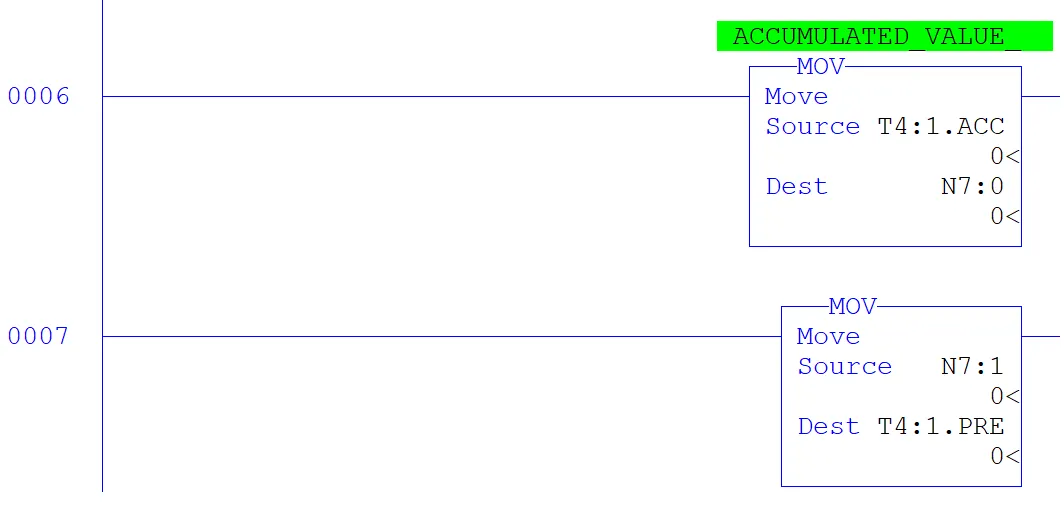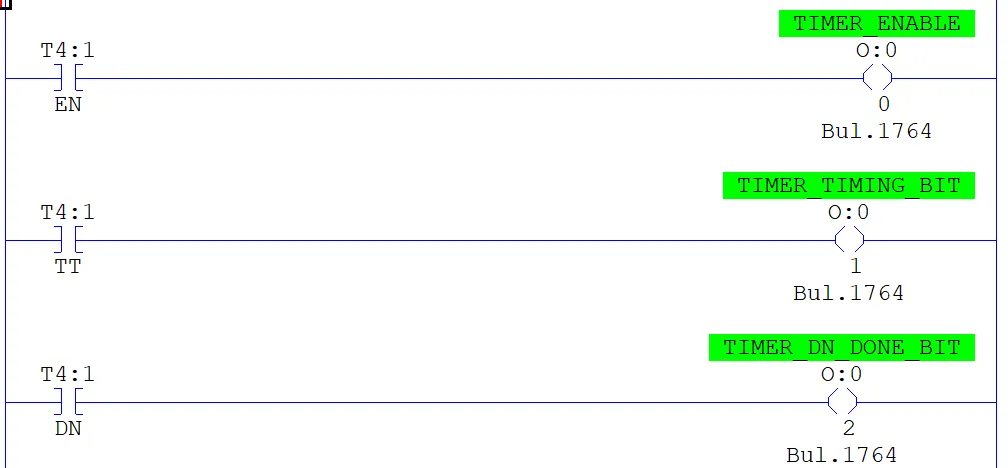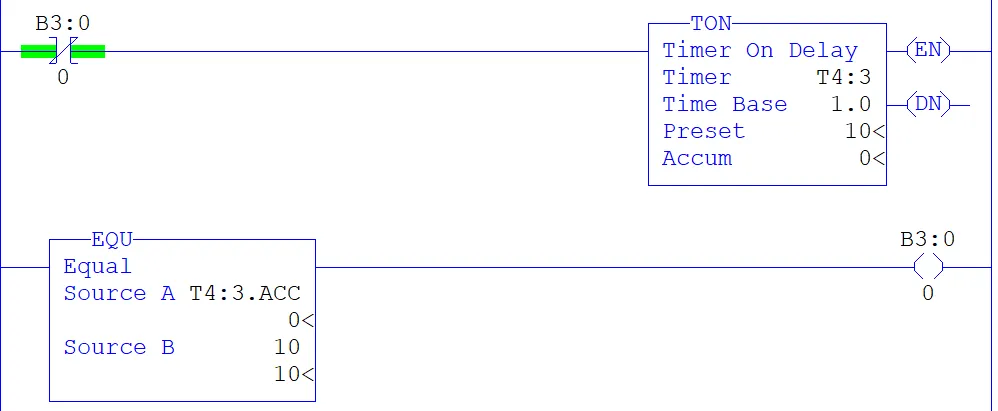rslogix 500 timer basic
Published on Apr21, 2021 | Category: timerShare this Page:
Timers and counters are output instructions that let you control operations based on time or number of events.Choose From These Timer and Counter Instructions.

Timers and counters are output instructions that let you control operations based on time or number of events.Choose From These Timer and Counter Instructions.
- TON - Delay turning on an output
- TOF - Delay turning off an output
- RTO - Time an event retentively
- RES - Reset accumulated value and status bits of a timer.(Not used with TOF timers)

- Accumulated Value (ACC) - For a timer, this is the number of timebase intervals the instruction has counted.
- Preset Value (PRE) - The preset value is the set point that you enter in the timer instruction. When the accumulated value(ACC) becomes equal to or greater than the preset value, the done status bit is set. You can use this bit to control an output device.
- Timebase - The timebase determines the duration of each timebase interval
- the enable bit (EN) of a timer is an easy way to repeat its complex conditional logic at another rung in your ladder program.
rslogix 500 on delay ttimer TON
TON [Timer On-Delay] TON instruction to turn an output on or off after the timer has been on for a preset time interval. This output instruction begins timing (at either one second or one hundredth of a second intervals) when its rung goes "true." It waits the specified amount of time (as set in the PRESET), keeps track of the accumulated intervals which have occurred (ACCUM), and sets the DN (done) bit when the ACCUM (accumulated) time equals the PRESET time. As long as rung conditions remain true, the timer adjusts its accumulated value (ACC) each evaluation until it reaches the preset value (PRE). The accumulated value is reset when rung conditions go false, regardless of whether the timer has timed out. If power is lost while a TON is timing but has not reached its preset value, the EN, and TT bits remain set , and the accumulated value (ACCUM) remains the same. This is also true if the processor changes from the REM Run or REM Test mode to the REM Program mode.
-
Note:
Addressing Help:
- Enter a TIMER address, TIME BASE, PRESET value, and ACCUM (accumulated) value. Timer files use three words per element, one for instruction bits (the control word), one for the preset, and one for the accumulator.
- T4:1 represents timer file number 4, element number 1.
simple example of timer
example 1
+ in this example timer start with start or reset of plc because no condition for start or stop timer.
 example 2
+ second example in this example timer start when start_timer input bit is set to 1. timer running for preset interval (10s). after complete timer preset value timer_DN bit is set to 1. if start timer input bit is set to 0 timer stop if again set to 1 timer start from begining.
example 2
+ second example in this example timer start when start_timer input bit is set to 1. timer running for preset interval (10s). after complete timer preset value timer_DN bit is set to 1. if start timer input bit is set to 0 timer stop if again set to 1 timer start from begining.
 + use move instrunction to set timer preset value while your plc runing.you can also compare timer value by using any of the compare instunction.
+ use move instrunction to set timer preset value while your plc runing.you can also compare timer value by using any of the compare instunction.
 + use of all timer bit , timer enable bit is set to 1 while your timer was enable (EN), timer done (DN) bit set to 1 when preset value is equal to acumalated value. timer TT bit set to 1 while your timer was running.
+ use of all timer bit , timer enable bit is set to 1 while your timer was enable (EN), timer done (DN) bit set to 1 when preset value is equal to acumalated value. timer TT bit set to 1 while your timer was running.
 + in this example timer running continusly after complete preset value. timer running bit is depend on timer done bit.
+ in this example timer running continusly after complete preset value. timer running bit is depend on timer done bit.
 + COMPARING OF TIMER VALUE, we can compare timer value or use any integer mathematics instrunctions. in this example first move timer value or you can used direct timer (ACCUMALATED VALUE) AND COMPARE.
+ COMPARING OF TIMER VALUE, we can compare timer value or use any integer mathematics instrunctions. in this example first move timer value or you can used direct timer (ACCUMALATED VALUE) AND COMPARE.
